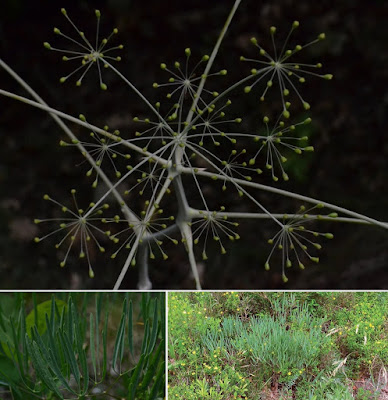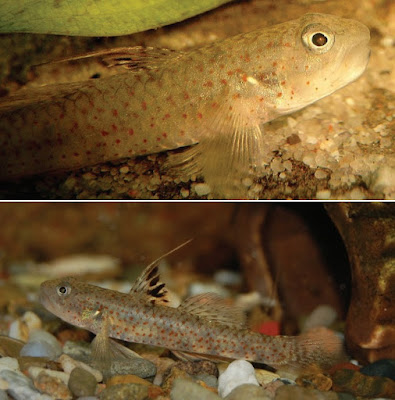[Most Recent Entries] [Calendar View]
Saturday, June 3rd, 2017
| Time | Event | ||
| 1:53p | [Botany • 2017] Validating the Systematic Placement of Eriosynaphe in the Genus Ferula (Apiaceae: Scandiceae: Ferulinae) Linked with the Description of Ferula mikraskythiana sp. nov. from Romania
Abstract The genus Eriosynaphe had a peculiar taxonomic history by having been considered also as member of the genus Johrenia in addition to originally having been established in Ferula. It has traditionally been regarded as monotypic and no previous molecular study examined its phylogenetic position. Based on sequences of the nrDNA ITS region, here we show that Eriosynaphe is ‘deeply’ nested in one of the well supported and repeatedly recognised clades of Ferula, thus arguing for its return to the genus Ferula. Additionally, a new species, Ferula mikraskythiana endemic to the Dobrogea region of southeastern Romania is described in the present paper. This species, with its overall habit and mericarp structure, closely resembles Eriosynaphe longifolia though it differs from the latter by its much larger stature, the morphology of the leaf terminal lobes and a distinct phenology. Moreover, F. mikraskythiana is a narrow endemic to a region beyond (westward to) the wide distribution range of E. longifolia. Keywords: Dobrogea, morphology, new species, nrDNA ITS, phylogeny, taxonomy, Umbelliferae, Eudicots Ferula mikraskythiana Mátis, A.Z.Szabó & L.Bartha, sp. nov. Etymology:— The specific epithet refers to the ancient Greek name Mikrá Skythia (Μικρὰ Σκυθία) of the historical region Scythia Minor or Lesser Scythia, where this species was found. This area, situated between the lower Danube River and the Black Sea, roughly corresponds to what is known today as Dobruja, a region shared by Romania and Bulgaria (Romanian: Dobrogea; Bulgarian: Добруджа, Dobrudža). This is in contrast to the presumably related E. longifolia, distributed along the historical region known as Great Scythia (the Pontic-Caspian steppe of Ukraine, southern Russia, and western Kazakhstan). Attila Mátis, Anna Szabó, Dmitry Lyskov, Gábor Sramkó, Thomas Kuhn, Alexandru S. Bădărău and László Bartha. 2017. Validating the Systematic Placement of Eriosynaphe in the Genus Ferula (Apiaceae: Scandiceae: Ferulinae) Linked with the Description of Ferula mikraskythiana sp. nov. from Romania. Phytotaxa. 298(3); 239–252. DOI: 10.11646/phytotaxa.298.3.3 Discovery! New plant species in Romania | BirdLife https://shar.es/1RGW5n | ||
| 2:00p | [Ichthyology • 2017] Pseudogobiopsis lumbantobing • A New Species of the Gobiid Fish Genus Pseudogobiopsis (Gobiidae, Gobionellinae) from Indonesia
Abstract A new species of Pseudogobiopsis is described, solving the identity of a goby from Java in a Kuhl and van Hasselt painting from Java. The species reached the European aquarium trade since at least 2001 but its identity had remained unknown due to lack of preserved, scientific specimens. Recent collections in Sumatra and Java included specimens of this new goby, which resembles P. oligactis. A revised key to the species of the genus is provided. Key words. Gobiidae, Gobionellinae, Pseudogobiopsis, new species Pseudogobiopsis lumbantobing n. sp. Diagnosis. A moderately slender Pseudogobiopsis with second dorsal-fin rays always I,6; anal-fin rays always I,6; pectoral-fin rays 17–18; longitudinal scales 21–24; TRB 6–8; predorsal scales 5–6, large, reaching up to close behind eyes; jaws enlarged in male; three preopercular pores present, posterior portion of oculoscapular canal present, but no canal or pores over opercle; most scales on body ctenoid; first spine of dorsal fin longest in both sexes, greatly elongate in males; five elongate dark blotches along midside of body, with five indistinct dusky short saddles crossing dorsum, black spot behind anus and four internal black blotches along midventral line, commencing at anal fin origin, black spot on upper part of pectoral fin base and chin with blackish mental frenum. Distribution. Known only from freshwater drainages of western Sumatra and western Java, Indonesia. Some specimens in the aquarium trade are said to be imported from Myanmar (Fig. 3), but this is yet to be confirmed. Ecology. Freshwater, found in rivers and streams at altitudes of 5–22 m, with a substratum of sand, gravel, rock and boulders; algae and aquatic macrophytes may be present (Figs. 8, 9).  Etymology. This species is named for Daniel Lumbantobing of Jakarta, who collected the first specimens and showed them to HKL in 2012, which solved the mystery of the orange-spotted goby of which aquarists had been sending her photos. Daniel is an ichthyologist who specialises in freshwater fishes. Name used as a name in apposition. Helen K. Larson, Renny K. Hadiaty and Nicolas Hubert. 2017. A New Species of the Gobiid Fish Genus Pseudogobiopsis (Teleostei, Gobiidae, Gobionellinae) from Indonesia. RAFFLES BULLETIN OF ZOOLOGY. 65: 175–180.  |
| << Previous Day |
2017/06/03 [Calendar] |
Next Day >> |






